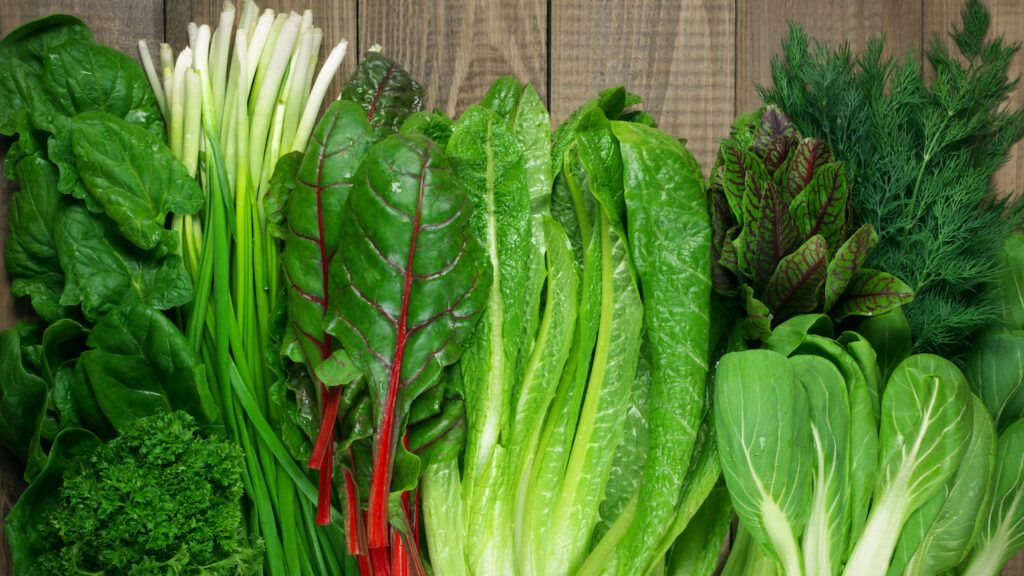Has there ever been a more oft-repeated nutritional phrase than, “Eat your greens?” Green leafy produce is a nutritional powerhouse, identified by the USDA as source of nutrients that can both increase health and prevent disease.
Greens contain an alphabet of healthful vitamins, including A, C, E and K. The latter is believed to be a key nutrient in promoting bone health and preventing osteoporosis. Greens are also a source of folate, the B-vitamin that may prevent colon cancer.
But as exciting and reassuring as these facts may be, nutritious foods are only helpful if we eat them—and we will only eat them if we enjoy them. Here’s a list of my favorite summer greens—all of which should be teeming at your local farmer’s market right now—plus easy and tasty ways to prepare them.
Spinach
Spinach is a leafy vegetable that, when harvested young, can be confused with salad lettuces. Like most greens, spinach has a high water content and low calorie count, plus a host of nutrients including iron, potassium, and dietary fiber.
How to Enjoy Spinach
I often substitute salad greens for spinach or make a 50/50 mix of the two. Another easy tip is to put raw spinach in a colander and drain cooked pasta over it—this wilts the spinach and makes it easy to distribute greens all through your favorite summer pasta dish.
Chard
Chard’s hallmarks are its shiny, ribbed leaves and its “rainbow” of yellow, orange, and red stalks. Young chard is mild like spinach, and can be eaten raw in salads, while more mature chard should be cooked to reduce its fibrousness and bitterness.
How to Enjoy Chard
Sautéing ribbons of chard in olive oil with a bit of garlic never hurt anybody—but that could be said of any dark leafy green. What makes chard a star is its stalk—don’t consign yours to the compost pile! Slice stalks thinly and sauté a minute or two before adding greens to your pan to wake up its pleasant texture and flavor. Adding a splash of lemon juice or balsamic vinegar finishes off chard nicely.
Kale
Often derided in jokes about healthy eating, kale is worth looking at anew. Related to cabbage and other members of the “brassica” family of plants, like broccoli and Brussels sprouts, kale comes in a number of varieties. Kale can be broad, curly, wrinkled or bumpy—but it’s always rich in nutrition and flavor.
How to Enjoy Kale
The key with kale is to encourage it to release its bitterness (that’s good life advice for all of us, isn’t it?). My favorite technique for this involves massaging ribbons of sliced lacinato kale—a hardy variety that is sometimes called “dinosaur kale”—with a big pinch of sea salt to break it down a bit and start leaching out the bitterness. Make a warm dressing of olive oil, garlic, lemon juice and chopped dried fruit, and drizzle it over the seasoned kale to wilt it further. Top with some toasted nuts, if desired—almonds, pine nuts or pecans all work well.
Do you have favorite summer greens recipes? I’d love to hear about them!





